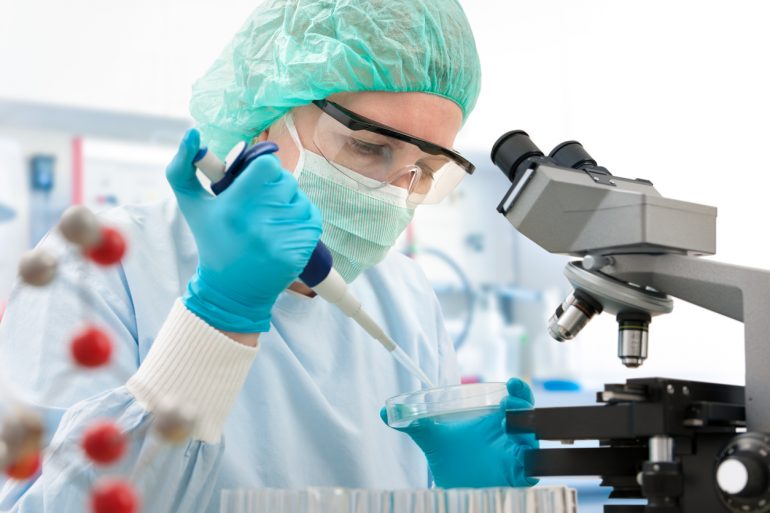If there is a genetic condition present in your family, you may want to explore options to reduce the risk of passing the condition on to your baby. Therefore, your fertility doctor may bring up the option of PGD testing. However, many medical processes can leave people feeling uncertain and anxious. Below, we break down the details of the PGD testing procedure. With this information, you can gain a deeper understanding of IVF and PGD procedures, so you and your partner can enter into the process feeling confident and empowered.
The PGD Testing Cycle Explained
Preimplantation genetic diagnosis, or PGD testing, is a procedure that allows couples with a hereditary genetic condition to significantly reduce the risk of passing it onto their children. In many cases, PGD can help prospective parents prevent their baby from being born with a serious genetic condition. PGD testing is utilized during an in vitro fertilization or IVF cycle. Below, we explain IVF with preimplantation genetic diagnosis in more detail, so prospective parents can get a clearer picture of how it works.
Step 1: Case Review and Probe Development
Each PGD test is custom-designed based on the specific disease and mutation that is inherited in a family. The patient or couple will provide their genetic testing results and information to the lab. The lab will review the results and accept the case if PGD is possible. Next, the lab will require DNA samples from the egg source, sperm source, and likely additional family members like parents or children. These samples will be used to develop the probe. This process typically takes a number of weeks.
Step 2: Stimulation of the Ovaries
Once the probe is complete, the reproductive endocrinologist will prescribe fertility medication to stimulate the egg source’s ovaries, causing them to produce several eggs at once. As it is likely that a number of a couple’s embryos will inherit the genetic abnormality, the patient will have a higher chance of producing normal unaffected embryos if they begin the processes with a larger quantity of eggs.
Step 3: Egg Collection
Next, a doctor will perform the egg retrieval. After egg retrieval, an embryologist will assess the eggs.
Step 4: Fertilization
Next, a doctor will fertilize each egg in the laboratory. This is done either with conventional fertilization, where the eggs and sperm are put together in a culture dish or through intracytoplasmic sperm injection (ICSI). ICSI is a procedure where specialist injects a single sperm cell into each egg cell. ICSI is typically the recommended method of fertilization if PGD is being utilized.
Step 5: Culture and Biopsy
Eggs that fertilize are then kept in the laboratory for five to six days until they reach blastocyst stage. A blastocyst embryo typically contains about 100-150 cells. When each embryo achieves blastocyst stage, the embryologist will perform a biopsy, removing approximately 2-10 cells from the embryo. The blastocyst will be vitrified and remain at the clinic, while the cells from the biopsy are placed in a test tube and sent to a lab for PGD testing.
Step 6: PGD Testing
Once the PGD lab receives the biopsy samples, the PGD lab will use the probe that was developed to test embryos for the inherited mutation. It is also possible to use the same biopsy sample to test for chromosomal errors in embryos with PGS. The PGD lab will provide results for each embryo to the clinic.
Step 7: Embryo Transfer
Next, the patient will discuss the results of their IVF + PGD cycle with their doctor. If the patient has normal embryos that are unaffected with the condition PGD was utilized for, they may decide to proceed with transferring an unaffected embryo. They may also decide to undergo additional retrievals and IVF cycles to create more embryos.
Step 8: Pregnancy
Twelve days after the embryo transfer procedure, the patient who underwent the embryo transfer will be given a pregnancy test. If the test is positive, the implantation has been successful.
Is PGD testing always successful?
As many prospective parents know, IVF does not always result in pregnancy. Many factors affect the chances of conception, all of which depend on your individual circumstances. If you want to better understand your chances of conceiving with IVF + PGD it is important to have a detailed conversation with your physician and ask for data on pregnancy rates. PGD testing is 98% accurate in the majority of cases. Therefore, doctors recommend confirmatory testing during pregnancy to establish the results of PGD. Testing during pregnancy has an even higher accuracy than PGD for single gene conditions.




